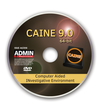« Previous 1 2 3
Comparison of forensic toolkits for reconstructing browser sessions
Data Archeology
Fast innovation cycles make securing a system against all vulnerabilities virtually impossible. If an attack succeeds, taking certain steps can at least uncover the actions of the criminals to preserve evidence or to harden the system against repeat attacks.
To investigate how a postmortem analysis proceeds (see the "IT Forensics" box), we'll look at the following sample scenario: On his lunch break, an office clerk uses his colleague's computer, without the consent of his neighbor, to order several books under this neighbor's Amazon account and at his neighbor's expense. To conceal his actions, the attacker then shuts down the computer. How could you prove this crime took place?
IT Forensics
The computer forensics guide by Germany's Federal Office for Information Security (BSI) [1] defines computer forensics as "the strict, methodological data analysis of data carriers and computer networks to investigate incidents involving possibilities for strategic preparation, in particular from the point of view of the operator of an IT system."
Computer forensics is a distinction made in terms of timing between live forensics and postmortem analysis. Live forensics takes place before the affected system is shut down but after the occurrence of the incident. The focus is on securing and analyzing volatile data, such as RAM, active processes, and network connections. Because a data backup changes these data, however, the analysis results are contestable.
Postmortem analysis takes place after the first shutdown of the system. Thus, the volatile data is lost, which explains the focus on non-volatile data (renamed, deleted, hidden, or encrypted files).
On the basis of this scenario, researchers mutually define general and scenario-specific requirements
...Buy ADMIN Magazine
Subscribe to our ADMIN Newsletters
Subscribe to our Linux Newsletters
Find Linux and Open Source Jobs
Most Popular
Support Our Work
ADMIN content is made possible with support from readers like you. Please consider contributing when you've found an article to be beneficial.





